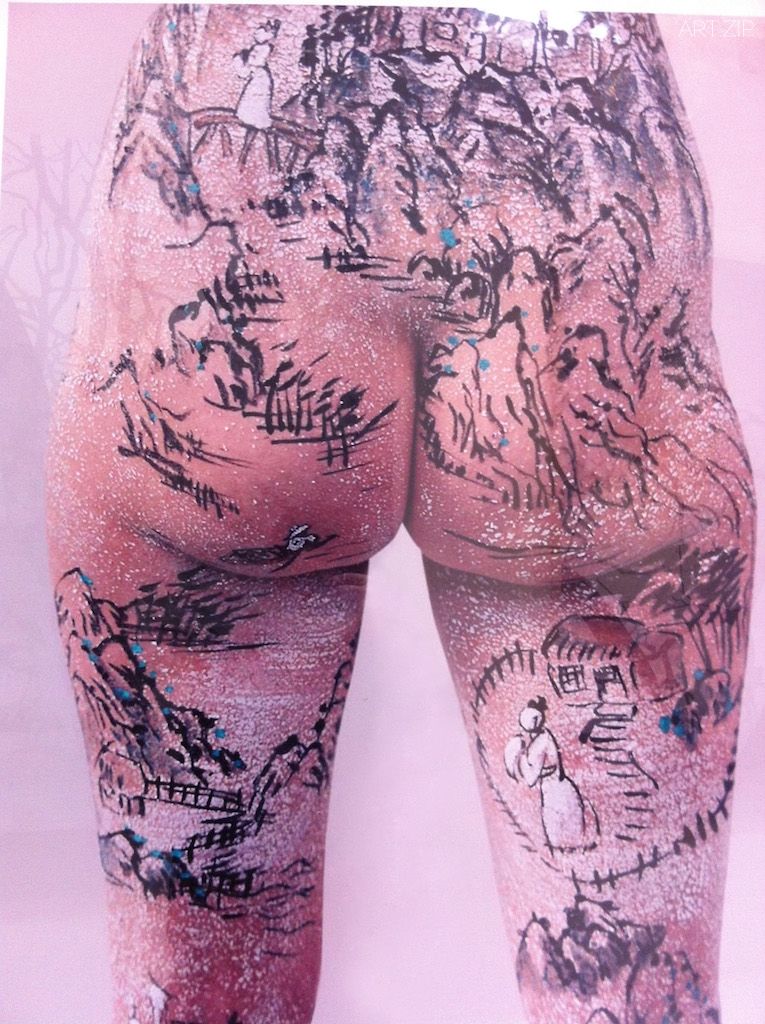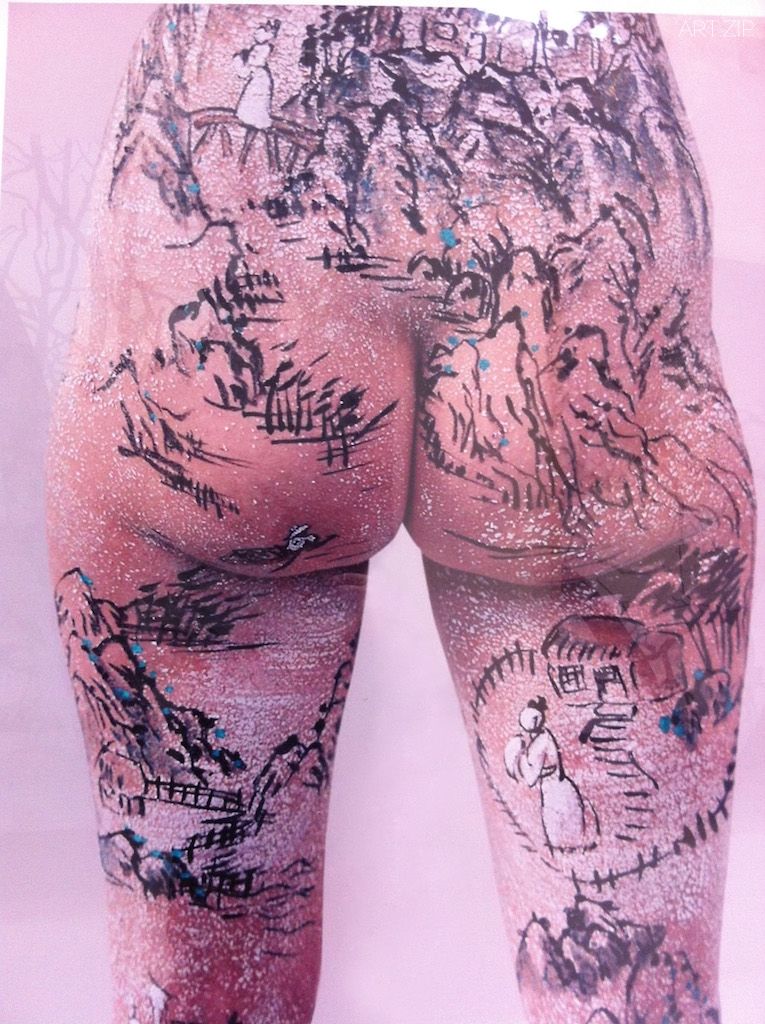
TEXT BY 撰文 x FION GUNN 菲昂·戈恩
EDITED BY 編輯 x MICHELLE YU 余小悅
TRANSLATED BY 翻譯 x ELAINE YU 余寧
I love the Venice biennale, the location, the huge numbers of participating artists, cultures, locations. I don’t mind being footsore and weary after a long day wandering from exhibition space to exhibition space. I don’t mind not liking a large number of the artworks I see and I don’t mind seeing individual shows curated by buffoons. What I do mind, terribly and painfully, to the point of wanting to stick pins in my eyes and shed someone’s blood, is visually illiterate smart arse curation infiltrating a whole biennale, shouting down individual voices and drowning out curatorial diversity.
Perversely, Massimiliiano Gioni, curator of the biennale included many more artists than in previous years (an impressive total of 150), so why accuse him of drowning out diversity? I do so because I feel that Gioni, sharply dressed and rising ‘inexorably’ to quote artreview.com curated the biennale as though he were kitting out a cool loft apartment in Manhattan, eager to impress, to maintain a slick, totally ‘academically appropriate’ decor. Control is the key for Gioni, listed as one of the eight top super-curators in the world – what does this even mean? Does he actually look at what’s going on out there in the wider world, beyond the universe of New York and the American Urban Empire?
“It (The Encyclopedic Palace,the 55th Venice Biennale) will zigzag across histories, covering 100 years of dreams and visions,” said Gioni, noting that 38 countries are represented. “A biennale can be pedagogical without being boring.”
He was wrong…the artworks felt as though they had been curated by a maniac librarian, catalogued according to medium and size, as though he had asked himself:
- why have a wall with 5 mediocre drawings when putting 500 of them on the same wall will be so impressive?
- why show one video screen when a bank of 100 screens will overwhelm the viewer even more?
- why not have an audio environment which is so deafening and unpleasant that people won’t spend too long in the huge space and won’t have time to see if the work is actually worth looking at?
I wouldn’t mind so much if there were a point to the unpleasantness – that after all, would give it meaning, would make the negative reaction worthwhile.
His predecessor Bice Curiger, one of only three women to have curated the Biennale did so with significantly greater finesse, engaged the viewers and reflected the diversity of the contemporary art world far more effectively.
Gioni remarked in the same interview “It [The Encyclopedic Palace] best reflects the giant scope of this international exhibition,” and “the impossibility of capturing the sheer enormity of the art world today.” More and more his curatorial revealed itself as repetitive, excluding, his underlying philosophy “being big = good” and the Encyclopedic Palace reflected nothing beyond its own navel.
Coline Milliard in her deferential critique of Gioni’s approach relates that “Rather than picking just one picture from Imran Qureshi’s Moderate Enlightenment series — which portrays contemporary characters using the ancient Mughal technique of miniature — Gioni has selected nine of them, the sheer critical mass enhancing their unsettling qualities.”
However, he didn’t manage to enhance anything, he made everything really difficult to look at, difficult to remember. In fact, he destroyed the impact of many really good artists’ work because he was unable to make good curatorial decisions.
It might sound harsh, but given the stranglehold that critics/academics/celebrities like him have on today’s artworld, I feel justified in levelling these criticisms. I have little sympathy with the privileged layer of super curators (none of whom is an artist or issue of a visual discipline) who currently dominate the presentation of art to the global general public. I’m not going to list them here, I don’t want to fuel the over-coverage which they already receive but, suffice it to say, that another one of the Super 8 – Okwui Enwezor , will curate the Venice Biennale in 2015. Maybe his background as a poet will give him a different perspective from Gioni’s into the curatorial process.
An artist who was featured in the 2013 Venice Biennale remarked:
“Gioni has a specific overview of what he wants, he has a thematic and that thematic has to be ‘muscled out’ made physical. And then he has these pairings, these special relationships between certain kinds of work and reactions he wants to provoke. So for instance, a work that I made with certain paintings and I really don’t share that view…”
I asked him how he found working with Gioni and he replied:
“For somebody to hold so many artists in his mind and to have only 6 months to curate a show from zero…I found it deeply fascinating to observe.”
He added worriedly, ‘in the best possible way of course and please don’t quote me on that because I might want to work with him again…”
Actually, I saw this show as a portrait of the curator and Gioni trying to grapple with his Catholicism or maybe his lapsed Catholicism, it was fascinating but I didn’t expect that. I expected the show to be an exploration but not an exploration of the curator’s psyche.
An abiding and convincing criticism of many ‘super curators’ is that these individuals are parachuted into environments where they are culturally insensitive and where they eat up resources which would be better spent or used in more ‘democratic’ ways. Using a theatrical metaphor it is as though they are the lead actors in a play who have to have their own spotlight always trained on them irrespective of anyone else acting on the stage (the other players remain in obscurity) and whether they have anything to say or not.
Personally, I would like to dismantle the critical sway of academic/art critic curators who have created a difficult, excluding space, from both the artists’ and the public’s perspective, strewn with obstacles to visual coherence, dialogue and engagement.
我熱愛威尼斯雙年展,它在良好的地段,有著大批來自不同地域和擁有不同文化的藝術家。我完全不介意一整天馬不停蹄地從一個展覽館奔至另一個,我也不介意看看我不喜歡的大多數作品和各種平庸的個展。我發自肺腑而痛心疾首地痛恨的是那些自以為是的視覺白癡,他們用圖像垃圾和獨裁的喇叭充斥著整個雙年展,抹殺著策展的多樣性。
事與願違,西米利亞諾·吉奧尼(Massimiliiano Gioni),上一屆雙年展的策展人囊括了比前些年要多許多的藝術家(竟然有150個之多!),那麽為什麽說他抹殺多樣性呢?我認為吉奧尼,這位被《藝術評論(Artreview)》評為時尚的“無情”新星,策劃雙年展時仿佛在打造曼哈頓的一間時髦公寓一般,急功近利地維系華而不實、卻具“適當學術性”的裝飾。對於吉奧尼來說,控制是核心,他被列為世界八大超級策展人之一 ,這又意味著什麽?他在紐約與美國城市大帝國外到底是否向外面的世界觀察過,去了其他地方在發生什麽?
“《百科宮殿(The Encyclopedic Palace, the 55th Venice Biennale)》將探索蜿蜒的歷史,涵蓋百年的夢想和願景”,吉奧說,“雙年展可以是學究的,但也可以不乏味。”
他錯了。展覽像是被一個瘋狂的圖書管理員策的,那些藝術作品按照媒介和尺寸編排在一起,好像他在問自己:
- 為什麽要在一堵墻上掛五幅不怎麼樣的繪畫,如果在同一堵牆上換成500幅一樣平庸的作品是不是就能讓人印象深刻?
- 為什麽只放一個攝像屏幕,如果放100個屏幕是不是能更震撼人心?
- 為什麽不提供一個震耳欲聾音頻環境,好使大家都不願意花太長時間在這個巨大的空間裡,也沒有時間去想想這些作品是否值得去欣賞?
如果這一切的令人不快是有目的的,我並不會如此在意 — 因為這樣的話便會有意義,使得負面反饋產生價值。
2011年雙年展策展人比奇•庫萊格(Bice Curiger)是歷史上唯一策劃過雙年展的三位女性之一,她在策展方面則要出色許多,她更有效地提升了觀者體驗,同時亦很好地展示了當代藝術的多樣性。
吉奧尼在同一次採訪中提到,“《百科宮殿》最能反映這個國際展會的巨大規模”,並且“反映了要捕捉了如此龐大的當今藝術世界是不可能的”。吉奧尼的策展越來越多地展露了它的重復性,排他性,他的基本理念是“大就等於好”,《百科宮殿》並沒有反映出除此之外的東西。
科琳•米麗德(Coline Milliard)在一篇恭維吉奧尼的評論中說道:“他不只挑選了一副伊姆蘭·庫雷希(Imran Qureshi)啟蒙運動系列的作品–用古老的莫臥兒微縮技術刻畫的當代人像–吉奧尼使用了九幅作品,這純粹的量化加強了它們令人不安的感覺。”
然而不幸的是,吉奧尼沒能提升什麽,他讓一切變得很難進行觀看,很難使人記住。事實上,因為他策展的失誤他毀了許多優秀藝術家作品。
這也許聽起來很刺耳,但當今藝術界被像他這樣的藝評人/學者/名人所控制,我覺得提出批評是有必要的。我並不支持這些超級策展人擁有特權,他們當中甚少是藝術家或視覺專家,但卻主導全球公眾觀看藝術的方式。我不在這裡一一列舉,我不想再增加這些已被過度報道的人和事,但簡單地說,另一位八大超級策展人之一的奧奎·恩維佐(Okwui Enwezor)將策劃2015年的威尼斯雙年展。也許他作為詩人的身份背景會給這次策展帶來不一樣的視角。
一位參加2013年威尼斯雙年展的藝術家說:
“吉奧尼很明確自己要什麼,他有自己的主題,又考慮著各種搭配,以此來挑明他想要闡述的某些特定作品與其反饋之間的特殊關係。譬如說,我創作的作品並不是他想要表現的那個觀點…”
當我問起他與吉奧尼共事有什麽感想時,他說:
“對於一位有這麽多藝術家要考慮而只有六個月時間從零開始準備策展的人來說,我覺得他十分有看頭。”
然後他又擔憂地補充到:“請不要引用我說的這些話,因為我可能會想與他再度合作…”
事實上,我覺得展覽很好地刻畫了策展人本身,吉奧尼試圖撇清他的天主教信仰,或者說他不再相信的天主教信仰,我沒有預料到這樣的發生,但十分有趣。我期待的雙年展是一場藝術探索之旅,但沒想到是探索策展人的內心。
對於這許多“超級策展人”比較有力的評論也許是這樣的:這些策展人被空降到一個不熟悉的文化環境,他們用光了所有可用資源,儘管這些資源也許能被更好地利用,或者以更民主的方式來進行分配。如果用劇場作比喻,他們就像劇裡的那些無時無刻需要鎂光燈聚焦的領銜主演,其他演員則在舞台一角無人關照,不管他們是否有話要說。
就個人而言,站在藝術家和公眾的角度,我希望能夠廢除這些學術派或藝術批評家策展人的統治,他們建立了一個令人窒息而排他的空間--佈滿荊棘,阻礙了視覺語言的連貫表述,也讓對話和參與變得愈加困難。


